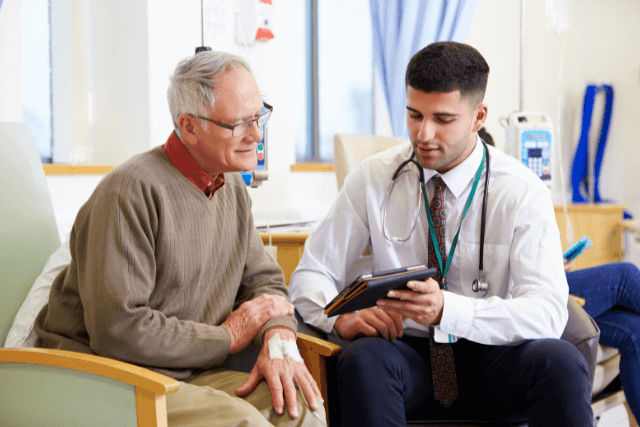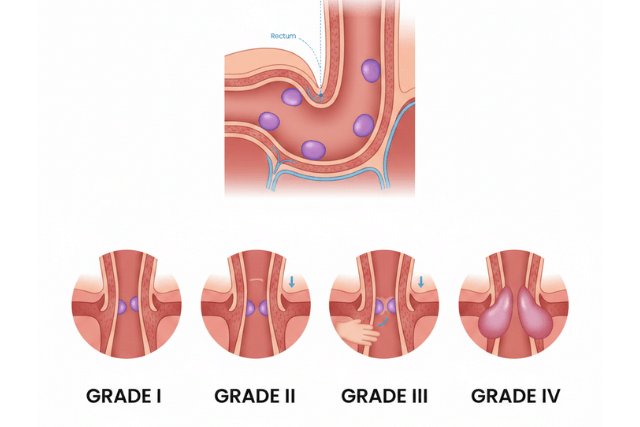External Hemorrhoids are one of the most common anorectal conditions, affecting millions of people worldwide. While many individuals feel embarrassed to talk about them, it is important to understand that they are a medical condition just like any other. Because they occur so frequently, healthcare providers have developed a wide range of treatments that offer both relief and long-term control.
In this blog, we will move step by step through every important aspect of External Hemorrhoids. First, we will explain what they are and why they matter. Next, we will look at their causes and symptoms. After that, we will explore home remedies that many people successfully use to control discomfort. Following that, we will review medical treatments offered by doctors. Then, we will highlight Laser Hemorrhoidoplasty, a modern treatment option that is gaining recognition worldwide. Finally, we will discuss how to choose the right treatment for your situation and end with clear key takeaways.
By the end, you will not only understand External Hemorrhoids better but also feel empowered with information that will guide you toward effective care.
What Are Hemorrhoids and Why External Ones Matter
To begin with, hemorrhoids are swollen and enlarged veins in the lower rectum and anus. They are similar to varicose veins that people sometimes develop in their legs. There are two main types of hemorrhoids: internal and external. Internal hemorrhoids occur inside the rectum and usually cause painless bleeding. External Hemorrhoids, however, develop under the skin around the anus and are more likely to cause discomfort.
Because External Hemorrhoids lie under sensitive skin, they often become painful when swollen or thrombosed. A thrombosed hemorrhoid happens when a blood clot forms inside the swollen vein. In addition, external types are easier to notice since they create visible or palpable lumps near the anus. Consequently, they can interfere with daily activities such as sitting, walking, and passing stool.
Furthermore, many patients report embarrassment about these lumps, which adds emotional stress. Thus, even though hemorrhoids are not life-threatening, the physical and emotional burden makes effective treatment essential.
What Are Hemorrhoid Causes and Symptoms
Next, let us explore what causes External Hemorrhoids. They occur when pressure increases in the veins of the lower rectum. As pressure builds, veins swell and stretch, eventually protruding into the anal canal or outside it. Several factors increase this pressure:
- Straining during bowel movements: This is the most common cause. It occurs when constipation makes stools hard or when diarrhea causes repeated trips to the toilet.
- Sitting for long periods: Sitting, especially on the toilet, places direct pressure on the anal veins.
- Pregnancy: Hormonal changes and the weight of the uterus both contribute to increased pelvic pressure.
- Obesity: Extra abdominal pressure increases the risk of venous swelling.
- Aging: Tissues supporting veins weaken with age, making hemorrhoids more likely.
- Heavy lifting: Straining the abdominal muscles also stresses anal veins.
Now that we know the causes, let us move on to symptoms. External Hemorrhoids usually produce:
- A painful lump near the anus
- Swelling and tenderness
- Itching and irritation
- Pain while sitting or moving
- Bleeding during bowel movements, usually bright red on toilet paper
In thrombosed cases, the lump may appear purple or bluish, and the pain can be severe. On the other hand, in mild cases, symptoms may be limited to itching or minor swelling.
Recognizing the causes and symptoms early is important. With this knowledge, you can take preventive steps or begin treatment before symptoms worsen.
Home Remedies for External Hemorrhoids
For many people, simple lifestyle changes and home remedies bring significant relief. These strategies are especially helpful when hemorrhoids are mild or at an early stage. Let us look at them one by one.
- First, increase fiber intake. Fiber softens stools and makes them easier to pass. As a result, it reduces straining during bowel movements. Foods rich in fiber include beans, lentils, oats, pears, apples, and leafy vegetables. If diet alone is not enough, fiber supplements such as psyllium husk can help.
- Drink enough water. Staying hydrated prevents constipation, which is one of the leading triggers of External Hemorrhoids. Adults should aim for six to eight glasses of water per day unless otherwise directed by their doctor.
- Use sitz baths. This involves sitting in warm water for 10 to 15 minutes, several times a day. Warm water increases circulation, relaxes anal muscles, and reduces swelling. In addition, sitz baths provide quick pain relief without medication.
- Apply over-the-counter creams and pads. Products containing hydrocortisone can reduce inflammation. Pads soaked in witch hazel provide soothing relief from itching. Although these treatments do not cure hemorrhoids, they help manage discomfort.
- Use cold compresses. Applying ice packs wrapped in a cloth can reduce swelling and numb pain temporarily.
- Adopt healthy bowel habits. Go to the bathroom as soon as you feel the urge. Do not strain. Avoid sitting on the toilet for long periods, since this increases pressure on veins.
When practiced consistently, these home remedies often bring improvement. Moreover, they create healthy habits that can prevent recurrences in the future.
Medical Treatments for External Hemorrhoids
When home remedies are not enough, doctors may recommend medical treatments. These methods are more targeted and effective, especially for moderate to severe hemorrhoids.
- Rubber band ligation: This involves placing a small band around the base of the hemorrhoid, cutting off blood flow. The hemorrhoid then shrinks and falls off in a week. While mainly used for internal hemorrhoids, it can sometimes benefit combined cases.
- Sclerotherapy: In this treatment, doctors inject a chemical into the hemorrhoid. The injection shrinks the blood vessel. Although more effective for internal hemorrhoids, it may reduce bleeding in mixed cases.
- Coagulation therapy: Using infrared light or heat, this technique hardens and shrinks hemorrhoids.
- Excisional hemorrhoidectomy: This is the surgical removal of hemorrhoids. It is considered the most effective option for severe or thrombosed External Hemorrhoids. However, recovery is painful and usually requires several weeks.
- Stapled hemorrhoidopexy: Surgeons use a circular stapling device to reposition hemorrhoidal tissue. This causes less pain than hemorrhoidectomy but has higher recurrence rates.
- Hemorrhoidal artery embolization: This newer procedure uses microcoils to block the arteries feeding the hemorrhoid. It reduces bleeding and is minimally invasive.
- Doppler-guided dearterialization: Surgeons use ultrasound to find hemorrhoidal arteries and then tie them off. This reduces blood flow and shrinks hemorrhoids.
Each treatment has its advantages and disadvantages. Consequently, the choice depends on severity, patient preference, and doctor recommendations.
Laser Hemorrhoidoplasty: A Modern Treatment Option
Among advanced treatments, Laser Hemorrhoidoplasty (LHP) has gained strong attention. This minimally invasive procedure uses a fine laser fiber to deliver energy directly into the hemorrhoidal tissue. The laser causes the hemorrhoid to shrink gradually while sealing blood vessels.
The advantages are impressive. Patients experience much less postoperative pain compared to traditional surgery. Moreover, there is minimal bleeding because the laser seals vessels instantly. In addition, surrounding tissues and the sphincter muscle are preserved, reducing the risk of complications.
Furthermore, recovery is quick. Most patients return to normal activity within a few days. Studies show that compared to rubber band ligation, LHP produces less pain and fewer complications, with similar long-term results.
For patients with External Hemorrhoids, Laser Hemorrhoidoplasty offers a balance between effectiveness and comfort. While excisional surgery works well for severe thrombosed hemorrhoids, LHP provides a gentler alternative with faster recovery.
Therefore, for individuals seeking modern, precise, and minimally invasive care, LHP represents a highly promising option.
Choosing the Right Treatment for You
Now that we have reviewed all options, how do you decide which treatment is best? The decision depends on your symptoms, medical history, and personal preference.
If your hemorrhoids are mild, start with home remedies such as fiber, hydration, and sitz baths. If symptoms persist, discuss medical treatments like sclerotherapy or band ligation with your doctor. For severe or thrombosed External Hemorrhoids, excisional hemorrhoidectomy may be required.
On the other hand, if you want minimal pain and quick recovery, Laser Hemorrhoidoplasty is an excellent choice. In addition, for patients with bleeding hemorrhoids who are poor surgical candidates, hemorrhoidal artery embolization may be appropriate.
Importantly, prevention should continue even after treatment. Eat a fiber-rich diet, stay hydrated, and avoid straining during bowel movements. In this way, you can reduce recurrence and maintain comfort.
Key Takeaways and Next Steps
- External Hemorrhoids are swollen veins under the skin near the anus that often cause pain, swelling, and irritation.
- Common causes include straining, pregnancy, obesity, and aging.
- Symptoms include lumps, pain, itching, and bleeding.
- Home remedies such as fiber, hydration, sitz baths, and topical creams help in mild cases.
- Medical treatments range from banding and sclerotherapy to excision and artery embolization.
- Laser Hemorrhoidoplasty stands out as a modern, effective, minimally invasive option with fast recovery and low pain.
- Choosing treatment depends on severity and personal needs, but prevention through lifestyle changes remains essential.
Conclusion
External Hemorrhoids are a common yet treatable condition. Although they may cause pain, discomfort, and embarrassment, modern medicine provides many solutions. From simple home remedies to advanced options like Laser Hemorrhoidoplasty, patients today have more choices than ever before.
Above all, early action matters. By recognizing symptoms quickly, adopting healthy habits, and consulting a healthcare provider, you can find relief and prevent recurrence. Therefore, if you experience symptoms, do not ignore them. Seek care, explore your options, and move confidently toward recovery.



